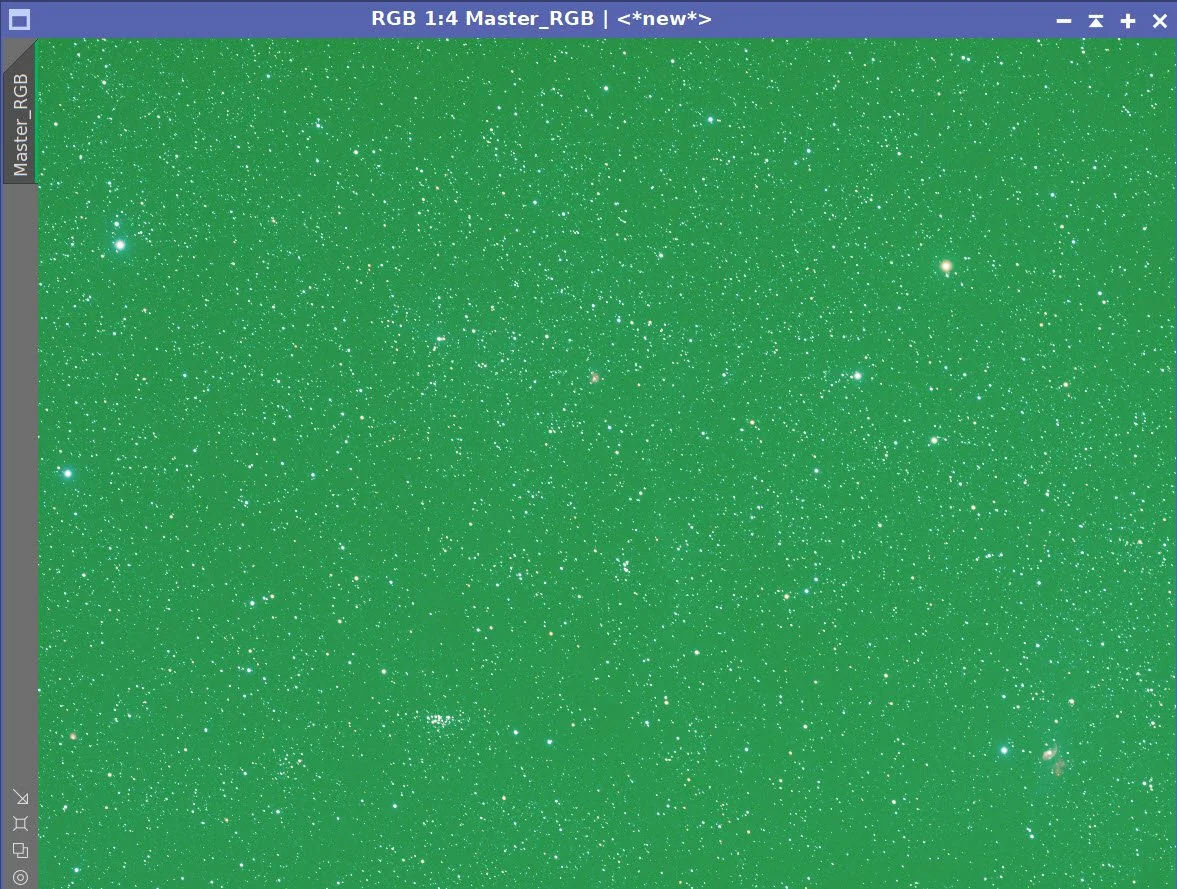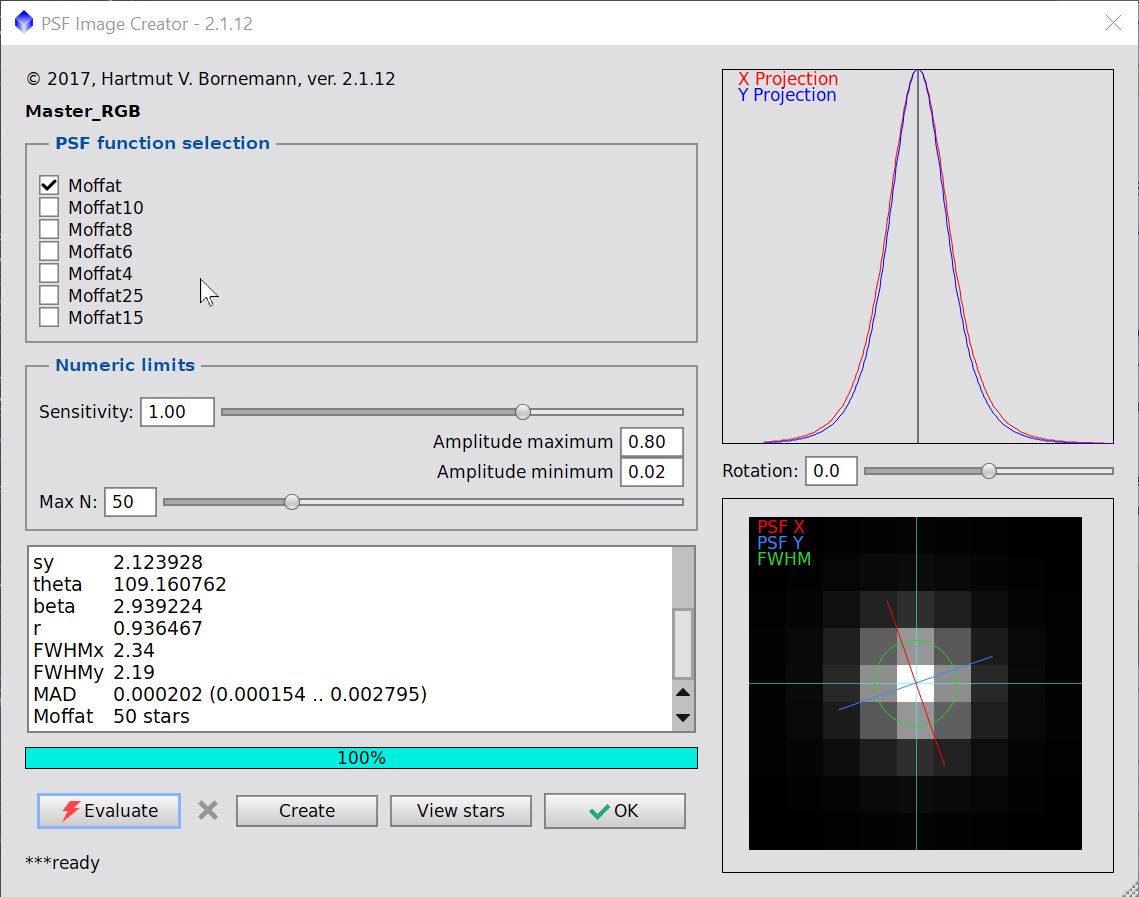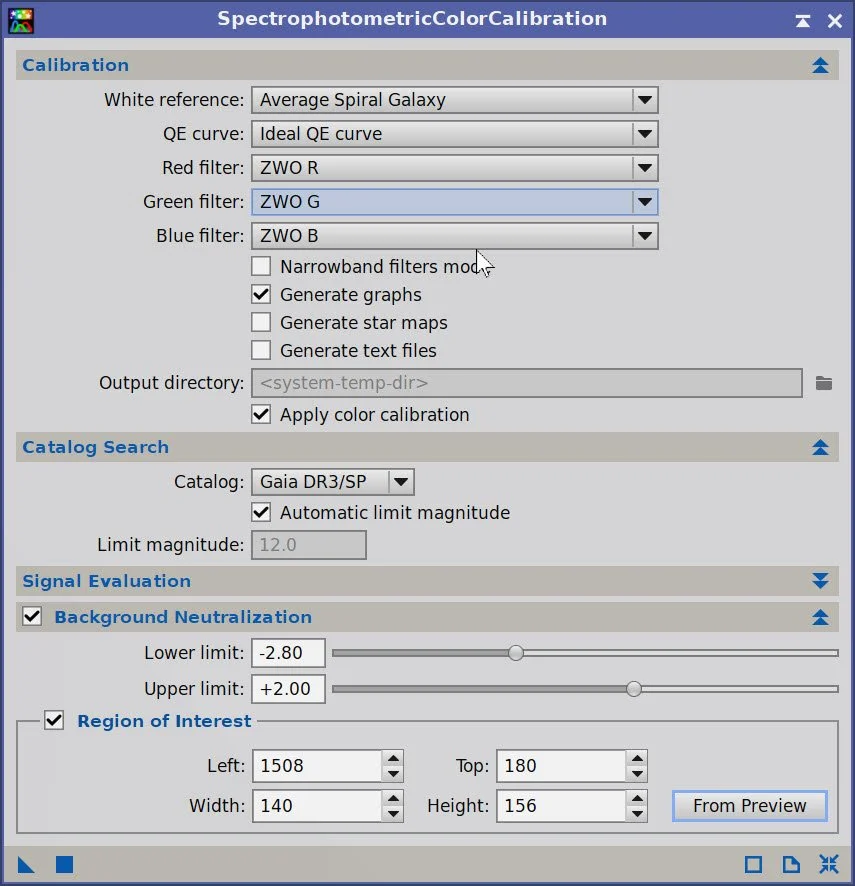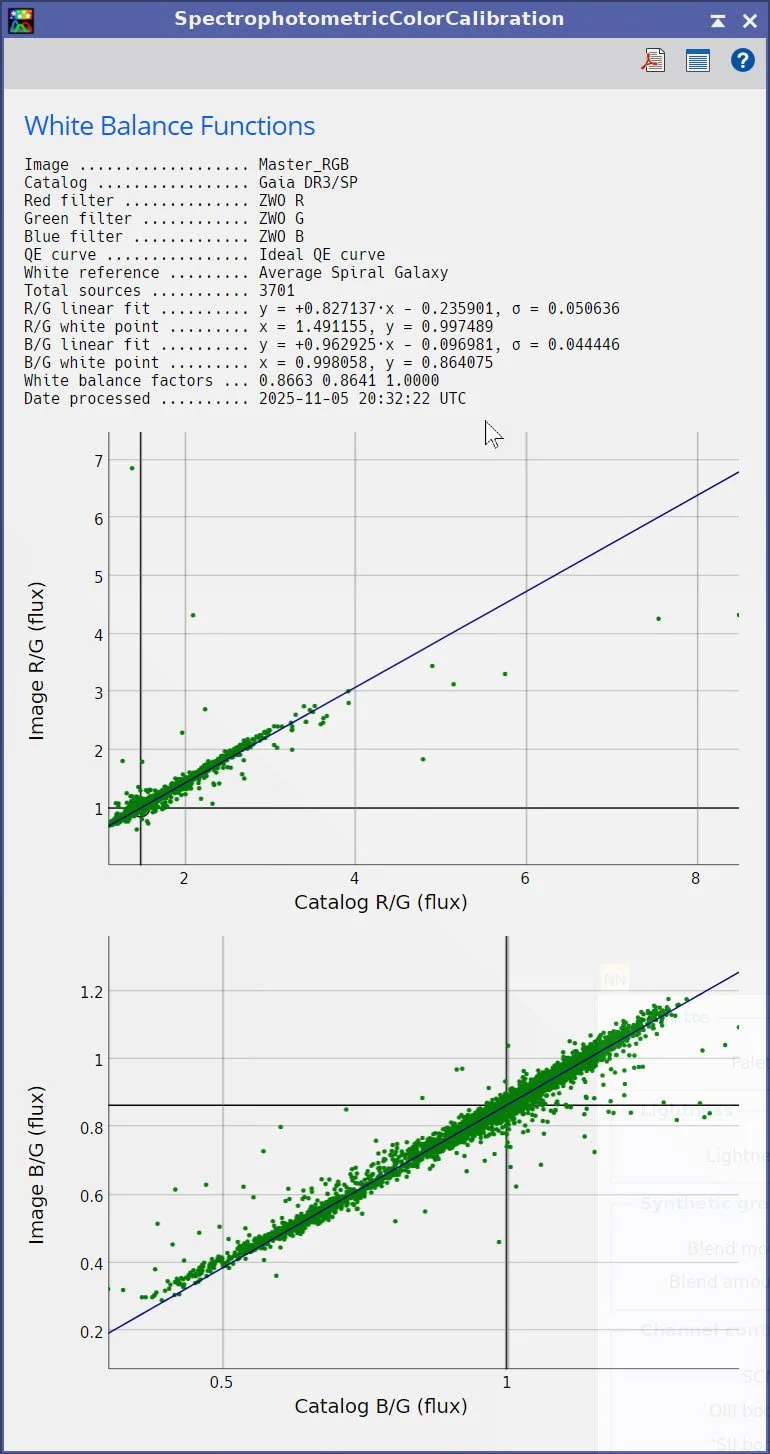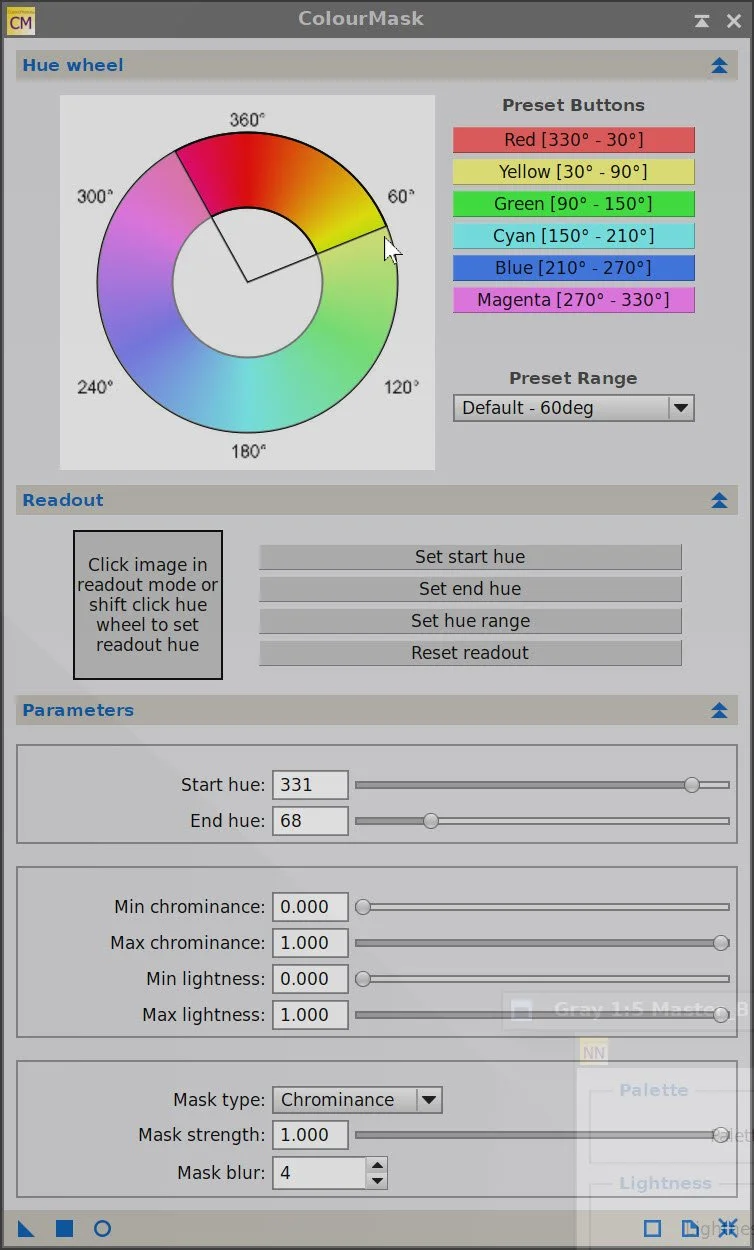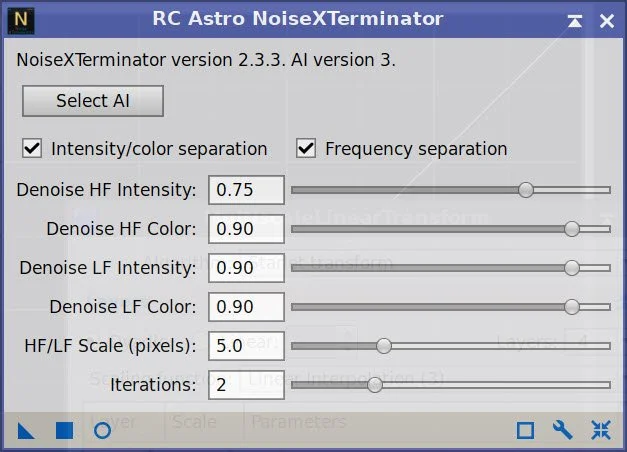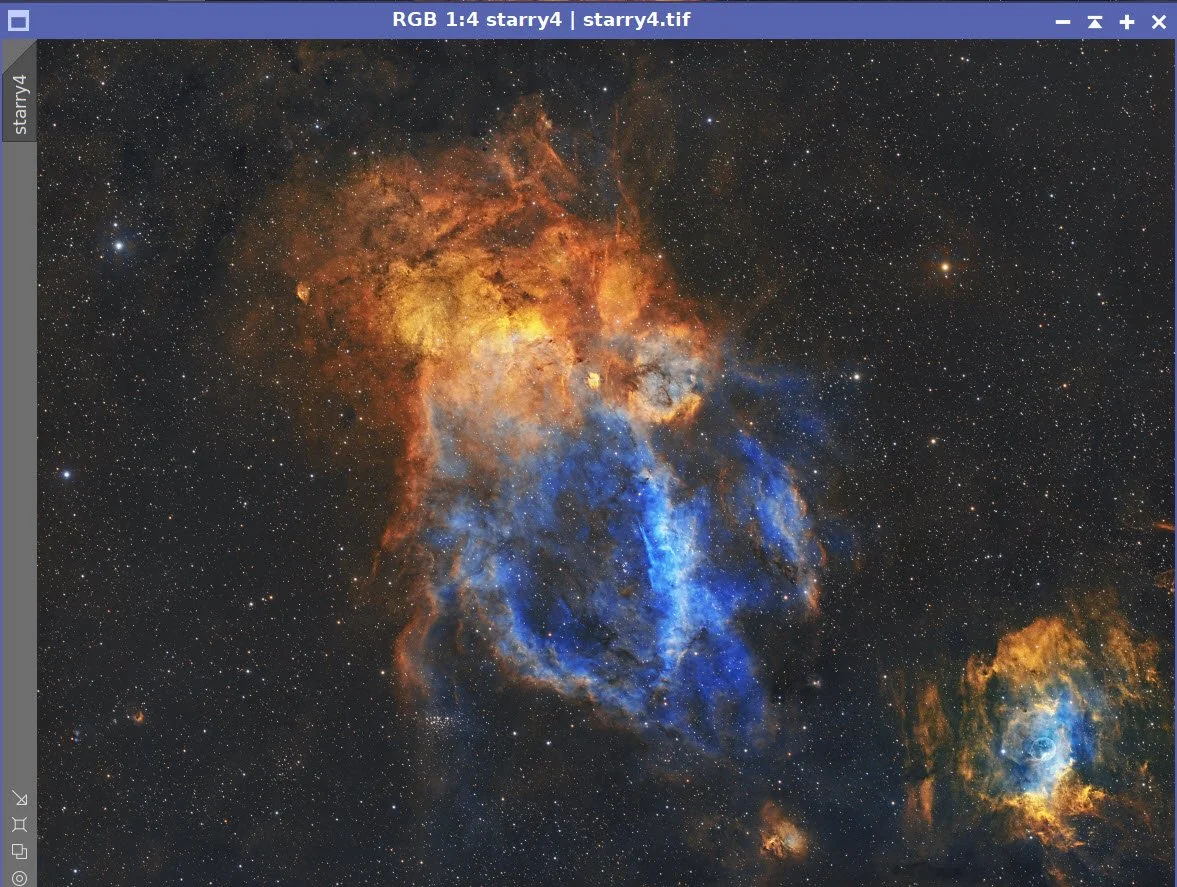SH2-157 - The Lobster Claw Nebula 2025: Image Processing Walkthrough
November 7, 2025
My Image of SH2-157 - The Lobster Claw Nebula
🔭 Project Summary
Target: Sh2-157 – The Lobster Claw Nebula (+ vicinity of NGC 7635)
Capture Dates: October 16, 17, 26–28, 2025
Constellation: Cassiopeia • Distance: ≈ 8–11 thousand light-years
Type: Emission Nebula / H II Region
Imaging Period: October 16–28, 2025 • Total Integration: 34 h 30 m (SHO + RGB)
Filters: Ha (6 nm) · O III (6 nm) · S II (6 nm) · RGB
Telescope: Askar FRA400 f/5.6 Quintuplet Astrograph (400 mm)
Camera: ZWO ASI1600MM-Pro (−15 °C; Gain 139 NB/RGB)
Mount: ZWO AM5 on Custom Steel Pier
Processing: PixInsight (SHO starless + RGB stars) & Photoshop
Location: Whispering Skies Observatory · Honeoye Falls, NY (USA)
Acquisition notes: Narrowband 300-s subs; RGB 90-s subs.
Table of Contents Show (Click on lines to navigate)
Special Note
Welcome to the New Image Processing Page for this project! You got here by following a link in the main Image Project Report, and you can easily return to that by using the back button on your browser.
Abbreviations Used
BXT NoiseXterminator by RC-Astro
CC Cosmetic Correction
CT Curves Transformation Process
DBE Dynamic Background Extraction Process
ET Exponential Transformation
HT Histogram Transformation
NXT NoiseXerminator by EC-Astro
SCNR Subtractive Chromatic Noise Reduction Process
SPCC SpectroPhotometric Color Calibration
STF Screen Transfer Function
STF->HT Method - dragging the STF triangle to the base of the Histogram Transformation tool and
then applying this to the image as a way of going nonlinear
SXT StarXTerminator by RC-Astro
WBPP Weighted Batch Preprocessing Script
Processing this Image
(All Processing is done in PixInsight, with some final touches done in Photoshop)
1. Blink
General
Lots of satellite tracks - easy to handle
Ha
3 frames removed - 2 for thin clouds, 1 more tracking
O3
3 frames removed, 3 for clouds
S2
4 frames removed, 1 for tracking, and three for clouds
Red
No frames removed!
Green
No frames removed!
Blue
No frames removed!
Darks
All looks ok
Dark Flats
All looks ok
Flats
all good
2. WBPP 2.8.9
Reset everything
Load all lights
Load all flats
Load all darks
Select - maximum quality
Reference Image - auto - the default
Select the output directory for the WBPP folder
Enable CC for all light frames
Pedestal value - auto
Darks - set exposure tolerance to 0
Lights - set exposure tolerance to 0
Lights - all set except for a linear defect
set for Autocrop
WBPP run 2:10:50 - no errors
WBPP Calibration View
WBPP Post Calibration View
WBPP Pipeline View
3. Load Master Images and Create Color Images
Load all master images and rename them.
Using CombineChannels, create the Master SHO and RGB color images
Master Ha, O3, and S2 Images
Master SHO image.
Master R, G, and B images
Master RGB color image.
4. Initial Process of Linear SHO data
Run DBE for the SHO linear image. Use subtraction for the correction method. Choose a sampling plan that avoids the nebulae (see below)
Run BXT - correct only. This cleans up the stars at the corners. Not much to do in this image as the scope is very crisp.
Run PFSImage script to measure star sizes. X = 2.25, Y = 2.10. This will influence the values used in BXT.
Run Full BXT - I am using an enhanced set of values to shrink stars more. These are about double the measured star sizes. See the BXT Panel Snapshot below.
Run NXT V3 - see params from snapshot below.
Run SXT and don’t save the SHO stars.
Run NarrowbandNormalization (see screenshot below for parameters used)
Master SHO Image DBE Sampling Plan (click to enlarge)
Master SHO- Before DBE (click to enlarge)
Master SHO after DBE (click to enlarge)
Background Subtracted by DBE (click to enlarge)
Measuring Star Sizes with PFSImage Script (click to enlarge)
BXT Settings Used. (click to enlarge)
NXT Panel used. (click to enlarge)




Master RGB Before BXT Correct Only, After BXT Correct Only, After BXT Full, After NXT
Final Master SHO Image
Master SHO Starless Image (click to enlarge)
NarrowbandNormalization Parameters used.
After NBNormalization (click to enlarge)
5. Process the Linear RGB Data
Run DBE for the RGB linear image. Use subtraction for the correction method. Choose a sampling plan that avoids the nebulae (see below)
Run BXT - correct only. This cleans up and stars at the corners. Not much to do in this image as the scope is very crisp.
Select a preview rectangle that samples the background sky, and then set up and run SPCC.
Use the Ideal curve
Use ZWO R, G, & B filter curves,
Run the PFSImage script to measure star sizes. X = 2.34, Y = 2.19. This will influence the values used in BXT.
Run Full BXT - I am using an enhanced set of values to shrink stars more. These are about double the measured star sizes. See the BXT Panel Snapshot below.
Run NXT V3 - see params from snapshot below.
Run SXT and don’t save the RGB starless image.
Master RGB DBE Sampling Plan (click to enlarge)
Before DBE (click to enlarge)
Master RGB after DBE (click to enlarge)
Master L Background subtracted (click to enlarge)
Measuring RGB star sizes.
Params used for BXT
SPCC Panel settings.
SPCC Regression Results.
Master-RGB Before SPCC (click to enlarge)
After SPCC (click to enlarge)




Master RGB before BXT Correct Only, After BXT Correct Only, After BXT Full, After NXT V3
Final Master RGB image - Before Star Removal.
Master RGB Star image after SXT.
6. Take RGB Stars Nonlinear
Use Seti Astro Star Stretch Script to stretch Stars
I decided to create three versions of the nonlinear star image. I would start with the settings that were lower than the default and then go for those that were higher.
Stars # 1 used a Stretch of 4.0 and a color boost of 1.4
Stars #2 used a stretch of 5.0 (the default) and a color boost of 1.4
Stars # 3 used a stretch of 6.16 and a color boost of 1.2
Star Stretch Script panel and params used for stars #1
StarStretch Params for stars #2
Starstretch Panel for Stars #2
Nonlinear RGB Stars image #1
Stars #2 Image
Stars #3 Image
7. Process the Nonlinear SHO Starless Image
Create the WarmMask
Use the ColourMask Process with Star Hue 331 and end hue 68, with a blur of 5
Apply CT to boost the mask
Create the CoolMask
Use the ColourMask Process with Star Hue 166 and end hue 270, with a blur of 5
Apply CT to boost the mask
Create the CenterMask with the GAME script. (We will use this to control the bright center feature in the claw)
Create the BubbleMask with the GAME script (We will use this to focus on the Bubble Nebula)
The initial color balance has too much magenta in it. To remove this, I am going to use my Invert Trick:
Invert the Image (magenta is now green!)
Run SCNR Green at 0.9 (removes the green!)
Invert the Image
Apply CT to set the basic tone scale and color saturation
Apply the Center Mask (let’s make that bright feature look better)
Apply CT to darken
Apply HDRMT with levels of 4 and “to intensity” selected (This will compress bright values)
CT to lighten after HDRMT
Apply LHE with a factor of 26, contrast limit of 2.0, and an amount of 0.3, and a histogram of 8 bits (This will bring up some fine detail)
Apply the BubbleMask
Apply HDRMT with levels of 7 and “to intensity” selected
Apply CT
Apply NXT with the params shown in the screensnap below
Now a final round of tweaks:
CT for the whole frame
CT with the BubbleMask
CT with the CoolMask
UnsharpMask with default params with the WarmMask
A final global CT
Params used to create the initial WarmMask
Initial WarmMask (click to enlarge)
WarmMask after CT Boost (click to enlarge)
The Params used to create the initial CoolMask
The CenterMask created with GAME. (click to enlarge)
Initial CoolMask (click to enlarge)
CoolMask after CT boost (click to enlarge)
The BubbleMask created with GAME. (Click to enlarge)
The initial image (click to enlarge).
After SBNR Green at 0.95 (click to enlarge)
Global CT Adjust. (click to enlarge)
After LHE with the WarmMask (click to enlarge)
The bright central feature we will adjust with the CentterMask. No Adj. yet made. (click to enlarge)
HDRMT With CenterMask Applied (click to enlarge)
LHE with CenterMask Applied (click to enlarge)
After HDRMT With BubbleMask (click to enlarge)
NXT Params used in the next step
Another CT adjust (click to enlarge)
A final CT with the CoolMask (click to enlarge)
Invert the image (click to enlarge)
Final Invert (click to enlarge)
After CT with the WarmMask (click to enlarge)
Apply CT with the CoolMask (click to enlarge)
CT with the CenterMask in place (click to enlarge)
CT with CenterMask (click to enlarge)
The Bubble Region Before Enhancement (click to enlarge)
CT adjust with BubbleMask (click to enlarge)
After NXT Applied - no mask (click to enlarge)
A final CT with the BubbleMask (click to enlarge)
Unsharp Mask used with the WarmMask (click to enlarge)
After one more CT, the SHO Starless image is complete.
8. Add the Stars Back In
Using the ScreenStars Script, add stars back into our SHO starless image. Do this three times with the three star images created
Pick the best one. I went with star image #1 because I think the heavier stars detract from the nebulosity in the image.
The script used to add the images back in,



Assessing the Three Star Images
Final Image ready for Photoshop Polishing!
9. Export the Image to Photoshop for Polishing
Save the image as a TIFF 16-bit unsigned and move to Photoshop
Make final global adjustments with Clarify, Curves, and the Color Mixer - slight tweaks really
Use the lasso tool with a feather of 100-pixel and select small detail areas of the image, and enhance with the Clarity, Texture, and color mixer tools
Added Watermarks
Export Clear, Watermarked, and Web-sized jpegs.
The Final Image!
The Final Image
10. Final Comments
On one level, this was a complicated process. The main complication was the need to process the RGB subframe separately from the SHO subframes. On the other hand, the processing steps used were simple and straightforward, and I had little trouble dealing with noise.
With the observatory now operational, I am finding it is easier than ever to extend my integration times.
With more integration, the SNR improves, and this, I believe, makes the processing relatively more straightforward to accomplish.
Back to the Main SH2-157 2025 Page
Alternatively, you can use the back arrow to return to the SH2-157 Main page, or you can use the menu at the top of the page to continue your navigation.
Thanks,
Pat








